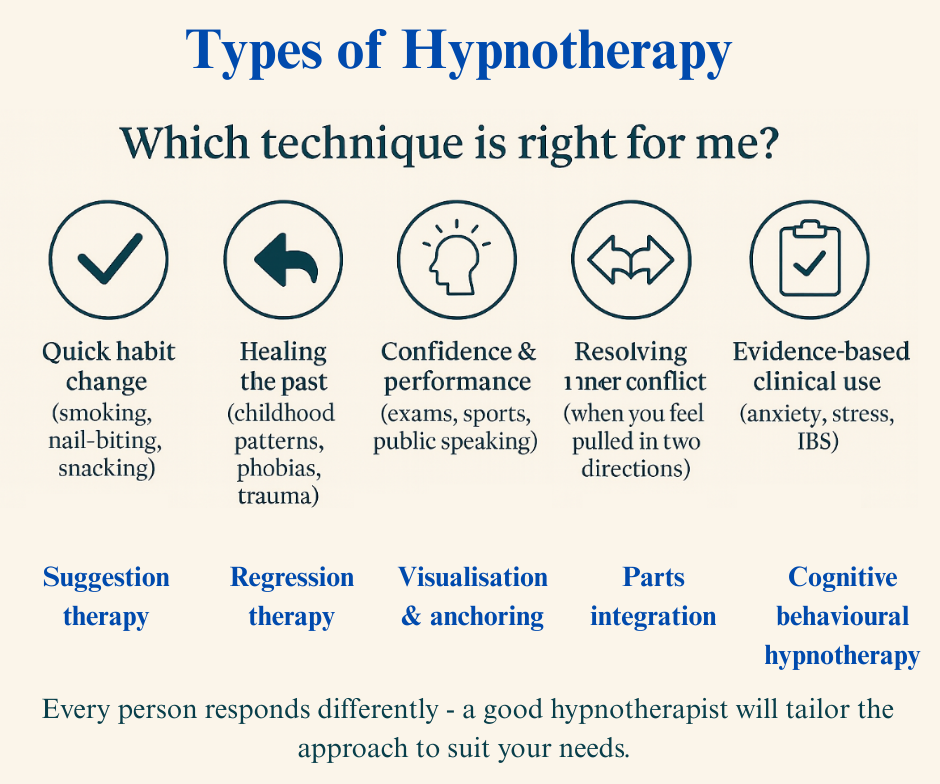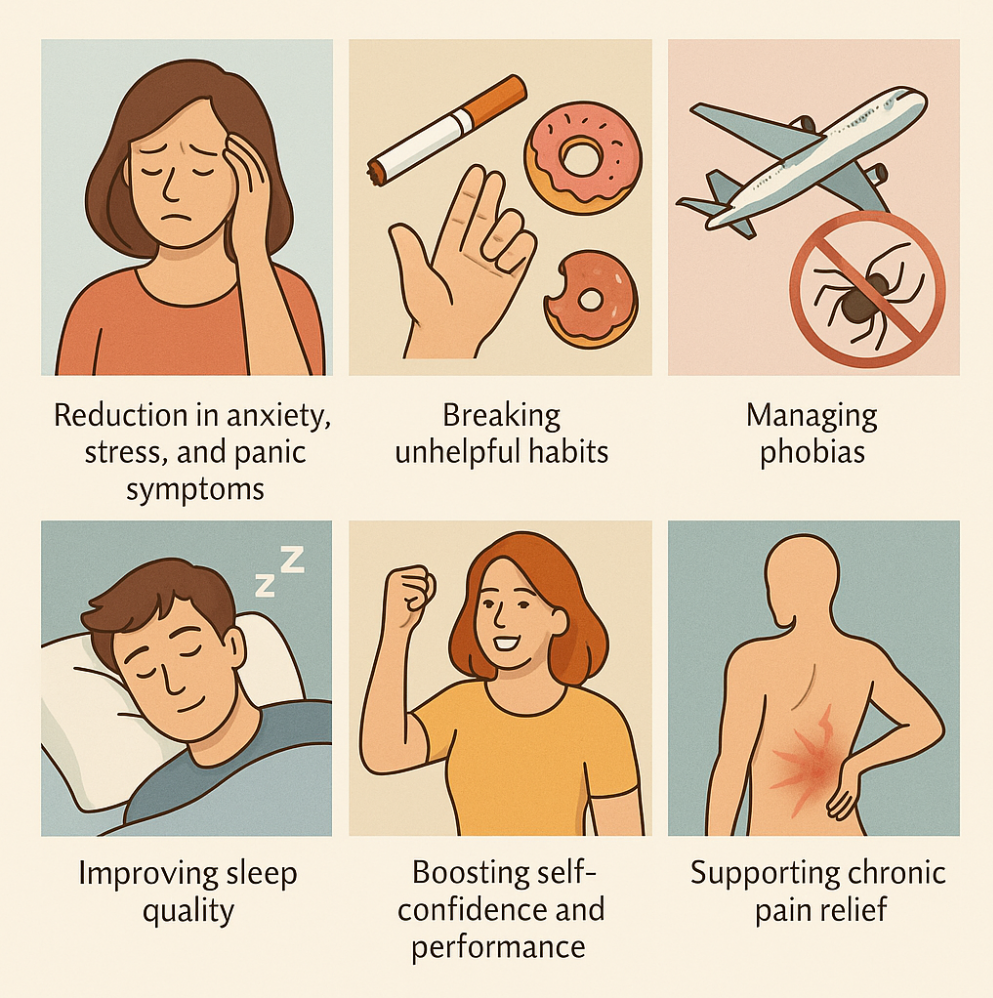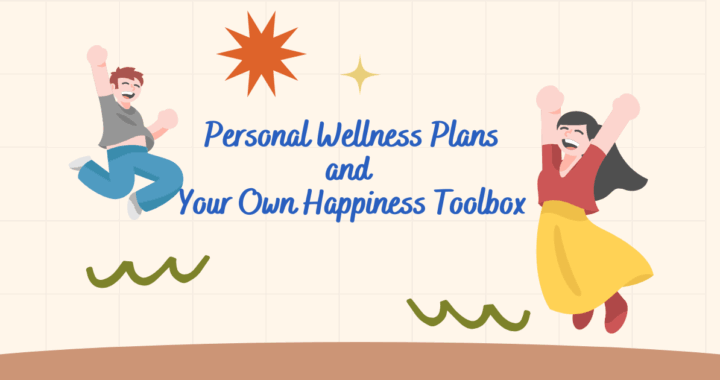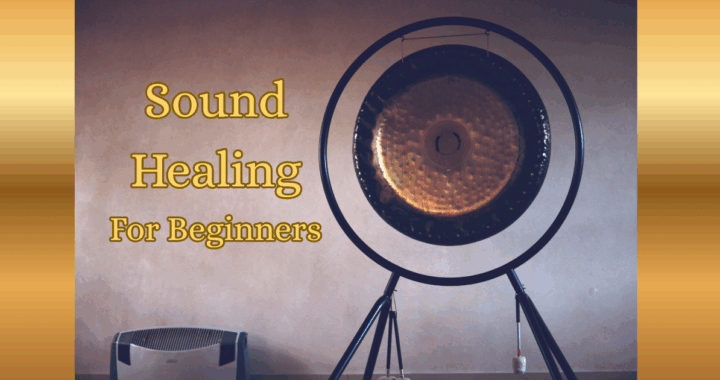I have been interested in hypnosis for as long as I can remember, and couldn’t wait to learn some as part of my NLP courses. This guide – hypnosis and hypnotherapy for beginners – will hopefully help you discover a love for both as I lead you into this fascinating and life-changing subject. So read on to discover how people have sought ways to harness the hidden power of the mind. From ancient healing rituals to modern psychology, humans have always been curious about how beliefs, emotions, and memories shape our lives.
Hypnosis and hypnotherapy offer one of the most direct ways of exploring this inner landscape. Yet confusion abounds: is hypnosis a stage trick, a medical tool, or something mystical? Is hypnotherapy safe? Does it really work?
This guide is designed for beginners, as I say, to explain clearly what hypnosis and hypnotherapy are, how they work, the different approaches used, and what science says about them.

What Is hypnosis?
Hypnosis is a natural state of focused attention and deep relaxation where the subconscious mind becomes more open to suggestion.
It is not the same as sleep. Instead, it is a trance-like state, similar to the absorption you feel when watching a film or drifting into a daydream. In hypnosis, your awareness narrows inwardly. You are still conscious and in control, but more receptive to new perspectives.
What Is Hypnotherapy?
Hypnotherapy is the therapeutic use of hypnosis to bring about positive changes in thoughts, feelings, or behaviour.
A hypnotherapist guides you into hypnosis and then uses carefully chosen suggestions, visualisations, or therapeutic techniques to address specific issues. Whereas hypnosis is the state itself, hypnotherapy is the application of that state for healing or personal growth.
How Do Hypnosis and Hypnotherapy Work?
The subconscious mind explained
Most of our habits, emotions, and automatic reactions are governed by our subconscious mind — in fact, psychologists estimate that around 95% of our daily thoughts and behaviours are influenced by the subconscious, with only about 5% controlled consciously (Bargh & Chartrand, 1999).
You can think of the subconscious like the software running quietly in the background. It stores everything you have ever learned — your language, your driving skills, the way you tie your shoes and everything you have ever seen, heard, felt or experienced through your senses. It also stores deeper patterns such as your beliefs about yourself, your fears, and your automatic emotional responses, many of which have been accrued over time as we live our lives.
The conscious mind, by contrast, is logical, analytical, and focused on problem-solving in the present moment. It is the tip of the iceberg that you are aware of in daily life, while the subconscious forms the massive structure below the surface.
In hypnosis, the “analytical barrier” between the conscious and subconscious softens. This allows direct communication with the subconscious, making it easier to:
- Reframe beliefs that are no longer helpful (“I can’t do this” → “I am capable and confident”)
- Release old patterns of behaviour, such as smoking or overeating
- Plant new suggestions that align with your goals, values, and wellbeing
This is why hypnotherapy can be so effective: it doesn’t just work with your conscious willpower but taps into the deeper level where real change takes root.
Techniques used in hypnotherapy
Hypnotherapy isn’t “one size fits all.” Different techniques are used depending on the client’s goals, their personality, and how they respond in trance.
Some of the most common include:
Suggestion therapy
This is the most straightforward method, often used for issues such as smoking cessation, weight management, or confidence building. While in hypnosis, the therapist introduces positive, direct suggestions such as “You feel calm and in control” or “You naturally choose healthier foods.” Because the subconscious is more receptive in this state, these suggestions can take root more effectively than when repeated in the fully alert conscious state.
Regression therapy
Regression is more therapeutic and in-depth. The hypnotherapist gently guides the client back to earlier experiences — sometimes childhood, sometimes significant life events, and even into past lives — to uncover the roots of present-day fears, traumas, or limiting beliefs. By re-examining these memories in a safe, supported state, clients can process unresolved emotions and change how their subconscious stores them. This approach is often used for phobias, trauma, and chronic issues.
Visualisation and guided imagery
The subconscious responds powerfully to mental images. In hypnotherapy, guided visualisation might be used to “rehearse” success (e.g. calmly giving a presentation, confidently boarding a plane, or enjoying a restful night’s sleep). Studies show the brain responds to imagined experiences in a similar way to real ones, so this kind of mental rehearsal can help “train the brain” into new patterns. It is particularly useful if the body also experiences some of the emotions that would be felt such as joy, pride, contentment.
Anchoring
Anchoring links a specific physical action to a desired state of mind. For example, a therapist may help a client recall a time of deep calm, then ask them to touch their thumb and forefinger together while in that state. Over time, the simple action of pressing thumb and finger together can trigger feelings of calm in stressful situations. This makes anchoring a useful tool for anxiety, public speaking, or exam nerves.
Parts therapy
Another approach sometimes used involves working with different “parts” of the psyche. For instance, the part that wants to stop smoking and the part that craves cigarettes may be encouraged to communicate. By allowing these conflicting parts to find common ground, lasting resolution can be achieved.
Cognitive-behavioural hypnotherapy (CBH) (also considered a distinct type of hypnosis – CBH integrates CBT with hypnotherapy and is widely researched.)
This combines traditional hypnotherapy with techniques from cognitive-behavioural therapy (CBT), such as challenging negative thoughts or practising new behaviours. It has growing support in clinical research and is particularly effective for anxiety, phobias, and performance issues.
Neurolinguistic programming (NLP) is another system that can use these different techniques to help people overcome some subconscious programming too.

Types of Hypnosis
Over the years, different schools of thought have developed, each with its own approach.
- Traditional hypnosis – uses direct suggestions (“You will feel calm and confident”). This works well for people who respond to clear, authoritative guidance
- Ericksonian hypnosis – pioneered by psychiatrist Milton Erickson (1901–1980). Instead of direct commands, he used stories, metaphors, and indirect suggestions, allowing the subconscious to interpret meaning in its own way. Most modern hypnotherapy draws on Ericksonian methods as it gently bypasses the analytical mind, inviting deeper subconscious engagement through artful language. Erickson believed in utilising whatever the client brought to the session such as their language, beliefs, even resistance, as tools for transformation
- Cognitive-behavioural hypnotherapy (CBH) – integrates hypnosis with CBT techniques. Increasingly popular in clinical settings, especially for anxiety and habit change
- Quantum Healing Hypnosis Technique (QHHT) – developed by Dolores Cannon, this method combines deep hypnosis with exploration of past lives and spiritual healing. While more controversial in mainstream circles, it is outside mainstream psychology but valued in spiritual/holistic practice and has a strong following in the holistic and spiritual community
- Self-hypnosis – techniques individuals can use alone, often taught by therapists, for relaxation, pain management, or confidence
On a personal note, I have used and experienced all of these types of hypnosis and use self-hypnosis through guided meditations to help in many aspects of my life and in my meditation sessions.
Myths and misconceptions
- “Hypnosis means losing control.” False. You cannot be made to do anything against your will
- “Hypnosis is only for the weak-minded.” In fact, it requires the ability to focus and needs imagination
- “You’re unconscious in hypnosis.” You remain aware and often remember everything
- “Stage hypnosis and hypnotherapy are the same.” Stage shows are entertainment; hypnotherapy is therapeutic and ethical
Benefits of Hypnosis and Hypnotherapy
Evidence from research
While more studies are needed, scientific evidence supports several benefits:
- Pain management: A meta-analysis in the International Journal of Clinical and Experimental Hypnosis found hypnosis significantly reduced pain in medical procedures (Montgomery et al., 2000)
- Anxiety and stress: A 2019 review in Neuroscience and Biobehavioral Reviews concluded that hypnosis shows strong potential for reducing anxiety, especially in medical contexts (Hammond, 2019)
- Irritable Bowel Syndrome (IBS): Research at Manchester University showed hypnotherapy improved symptoms for many patients with IBS, with effects lasting years (Gonsalkorale, 2006)
- Smoking cessation: Studies suggest hypnotherapy can be as effective as other behavioural interventions, though results vary depending on motivation and practitioner skill
Reported benefits include:
- Reduction in anxiety, stress, and panic symptoms
- Breaking unhelpful habits (smoking, nail-biting, overeating)
- Managing phobias such as fear of flying, spiders, or needles
- Improving sleep quality
- Boosting self-confidence and performance
- Supporting chronic pain relief

What Happens in a Hypnotherapy Session?
A typical hypnotherapy session lasts around 50–60 minutes, though the exact length can vary depending on the client’s needs and the therapist’s approach. Each session is designed to be safe, structured, and supportive. Here’s what usually happens:
1. Consultation
The session begins with a friendly conversation. Your therapist will ask about your goals, for example, whether it’s overcoming a fear, reducing stress, breaking a habit, or boosting confidence. This is also the moment to share any concerns or ask questions. The therapist explains what hypnosis is (and what it isn’t) so you know exactly what to expect.
2. Induction
Next comes the induction, where the therapist helps you shift into a relaxed, focused state. This might involve:
- Breathing exercises to calm your body
- Counting down slowly, guiding your awareness inward
- Asking you to imagine a peaceful scene, such as walking down a staircase or lying on a beach
The aim is to quieten your busy conscious mind and open the doorway to the subconscious.
3. Deepening
Once you are calm, the therapist will gently deepen the trance. This could be done with repeated counting, imagery such as sinking into a soft chair, or language patterns that encourage focus. People describe this stage as feeling like a dreamlike state, often heavy yet light at the same time, with a sense of calm detachment.
4. Therapy
This is the heart of the session. Depending on your goals, the therapist may:
- Give positive suggestions (e.g. “You feel calm when you step on the plane”)
- Guide you through visualisation (e.g. picturing yourself speaking confidently at a meeting)
- Use regression to revisit earlier experiences and reframe old patterns
- Employ techniques such as anchoring or parts therapy to support change
Some sessions may feel practical and focused, while others may feel more exploratory and emotional.
5. Awakening
When the therapeutic work is complete, the therapist guides you gently back to full alertness. This usually involves counting up, suggesting feelings of energy returning to your body, and reorienting you to the room. Clients often report feeling unusually rested, clear-headed, or refreshed, even if the session was emotionally deep.

Important to know: You are never unconscious or out of control during the process. You can open your eyes or stop the session at any time. Most people compare the feeling to being deeply absorbed in a book or film — relaxed, inwardly focused, but still aware.
First-time tips
- Wear comfortable clothes
- Eat lightly beforehand
- Be open and curious
- Remember, you are in control throughout
Is hypnosis safe?
Yes. Hypnosis is considered safe when practised by a qualified professional. It is drug-free and non-invasive. The only caution is to avoid untrained practitioners who may overstate claims and not work under proper and agreed codes of conduct.
*** Important Note ***
Do not use hypnotherapy if you have psychosis or certain types of personality disorder, as it could make your condition worse. Check with a GP first if you’ve got a personality disorder.
How to Find a Qualified Hypnotherapist
Look for professional memberships, such as:
- British Society of Clinical Hypnosis (BSCH)
- National Council for Hypnotherapy (NCH)
- American Society of Clinical Hypnosis (ASCH)
Membership ensures proper training and ethical standards.
Can you try self-hypnosis?
Yes. Many people use self-hypnosis for relaxation and focus. I use this a lot and can recommend many guided meditations, especially if you need a little help to relax and enter a relaxed state.
A simple method:
- Sit or lie comfortably and close your eyes
- Focus on your breathing, allowing each exhale to deepen relaxation
- Imagine descending steps or floating into calm
- Repeat a positive suggestion, such as: “I am calm and confident”
- Count back up and open your eyes when ready
Self-hypnosis is safe and can be a valuable daily practice.
Hypnosis and hypnotherapy are not about surrendering control, but about accessing the inner resources of your subconscious. Whether in a clinical office or holistic setting, they can be powerful tools for healing, growth, and self-discovery.
The best way to understand them is to experience them. Whether you choose a traditional hypnotherapist, an Ericksonian approach, or a spiritual method like QHHT, each has the potential to open new doors to your inner world.
FAQ: Hypnosis and Hypnotherapy
What is hypnosis in simple terms?
Hypnosis is a natural state of focused attention and deep relaxation where your subconscious mind becomes more open to suggestion. You remain aware and in control throughout.
What is the difference between hypnosis and hypnotherapy?
Hypnosis is the trance-like state of relaxation and focus. Hypnotherapy is the therapeutic use of that state by a trained practitioner to help with issues such as anxiety, habits, or phobias.
Can anyone be hypnotised?
Most people can experience hypnosis if they are willing and able to focus. Depth varies, but almost everyone can benefit from hypnotherapy techniques. Do not use hypnotherapy if you have psychosis or certain types of personality disorder, as it could make your condition worse. Check with a GP first if you’ve got a personality disorder.
What is hypnotherapy used for?
Hypnotherapy is commonly used for stress, anxiety, phobias, habit-breaking, sleep improvement, confidence building, and pain management. Research shows benefits for IBS, anxiety, and medical pain relief.
Is hypnosis safe?
Yes. When conducted by a qualified professional, hypnosis is safe, non-invasive, and drug-free.
References
- Bargh, J. A., & Chartrand, T. L. (1999). The unbearable automaticity of being. American Psychologist, 54(7), 462–479.
- Montgomery, G. H., et al. (2000). The effectiveness of adjunctive hypnosis with surgical patients: A meta-analysis. International Journal of Clinical and Experimental Hypnosis, 48(2), 163–183.
- Hammond, D. C. (2019). Hypnosis in the treatment of anxiety and stress-related disorders. Neuroscience and Biobehavioral Reviews, 107, 135–144.
- Gonsalkorale, W. M. (2006). Gut-directed hypnotherapy: The Manchester approach for treatment of irritable bowel syndrome. International Journal of Clinical and Experimental Hypnosis, 54(1), 27–50.
- NHS UK. Hypnotherapy. Retrieved from https://www.nhs.uk/conditions/hypnotherapy/
- American Psychological Association. Hypnosis Today. Retrieved from https://www.apa.org/topics/hypnosis
- British Society of Clinical Hypnosis. https://www.bsch.org.uk





This beginner’s guide to hypnosis and hypnotherapy is wonderfully clear and inviting! I appreciate how you demystify a confusing topic by separating hypnosis (the trance-like state) from hypnotherapy (its therapeutic application). Your analogies—like comparing the subconscious to software running in the background—and practical summaries of techniques like anchoring, regression, and CBH really help ground the information. I have a couple of questions:
When you introduce techniques like anchoring or parts therapy, do you find that most beginners find one approach especially helpful or intuitive over the others?
Also, you mention that hypnosis softens the “analytical barrier” between conscious and subconscious minds—which sounds powerful. Have you noticed any differences in how well clients respond based on their openness or ability to visualize during a session?
Thank you for sharing this balanced, approachable entry into a fascinating practice!
Hi Leahrae. Great to see you again, and thanks for your kind comments. To answer your questions, the technique that you use will really depend on the issue that the client is facing in the first place and as a practitioner, you will arrive at that understanding through the use of specific questions to help you understand the problem or block they are facing. Then you can use the most appropriate technique to help with that problem.
When it comes to people being able to be hypnotised, it is important that they can visualise and use their imagination as you guide them through the process. In my own experience, most people will respond well but there are some people who are deemed to be ‘low-hypnotizable’ due to things such as profound cognitive impairments (e.g., severe brain injury or very low IQ), chemical impairment (e.g., under the influence of substances) or people who are not willing. If someone doesn’t want to be hypnotized, it simply won’t work.
However, if people are just feeling a little anxious or uptight, then it may take some people longer to start to trust the process and relax into it than others. Sometimes it just takes a litlte practice in being able to quieten their mind, in the same way that it can take time to learn to meditate deeply.
This was such a fascinating and thorough guide—I really appreciate how you explained hypnosis in a way that clears up the common myths. The comparison to daydreaming or being absorbed in a film makes it so much easier to understand that it’s not about “losing control,” but about focused relaxation.
I also liked how you broke down the different types of hypnotherapy techniques, especially regression therapy and visualisation. It’s interesting to see how versatile the practice is, whether for overcoming fears, managing pain, or even building confidence.
Your personal note about using self-hypnosis through guided meditations really stood out—I’ve been curious about trying that for stress management and sleep, and now I feel more encouraged to give it a go.
Thanks for making such a complex subject approachable. Out of the different approaches you mentioned, have you found one to be especially effective for beginners just starting out?
Hi Janette. Thanks for your kind comments on the article and I’m so pleased you found it made the subject approachable and understandable for you. Hypnosis and hypnotherapy are very versatile and they can be used for so many great and healing practices – I love them as you might tell. To answer your question, as a beginner, I really suggest you follow your instincts and listen to some guided meditations that are available on YouTube. Many hypnotherapists offer introductory sessions to if you are working on a specific issue like smoking cessation or weight-loss too. As I said in the article, you can start at home with self-hypnosis and see how you like it. I recommend work from Jason Stephenson and Dr. Joe Dispenza particularly. At the very least, giving yourself time for self-care and relaxation is something we should all be investing in.
This article does a fantastic job of breaking down hypnosis and hypnotherapy in a way that’s approachable for beginners. I especially liked the explanation of the subconscious as the “software running in the background”—it really helped me understand why hypnotherapy can have such lasting effects. My question is: for someone just starting, would you recommend beginning with self-hypnosis at home first, or going straight to a professional session to get the best results?
Hi Jenny. Thanks for your kind comments on the article. I’m glad it was able to help you understand why hypnotherapy can make a difference. We are all running our own ‘software’ programmes based on the things we have experienced and have been taught along our life journey. Some of these are helpful, but many are very limiting and unless we adress them, they can hold us back from accessing our true power.
To answer your question, I think it would depend on what the perceived problem is that you are trying to solve. For things such as losing weight or phobia cures, I would recommend trying to find a qualified and registerd professional to obtain the quickest results, otherwise, if you are generally looking to sleep better or relax more, then there are a lot of videos on YouTube that can help you with this to start with on a self-hypnosis level. Let me know how you get on. Gail